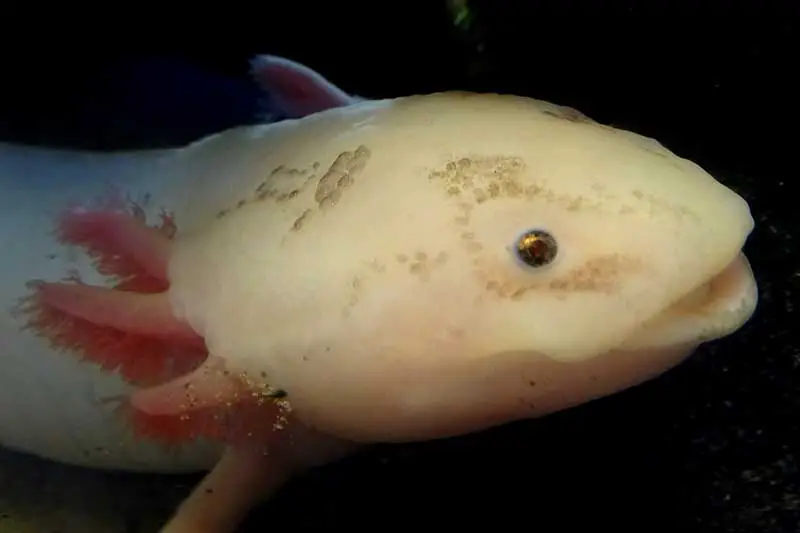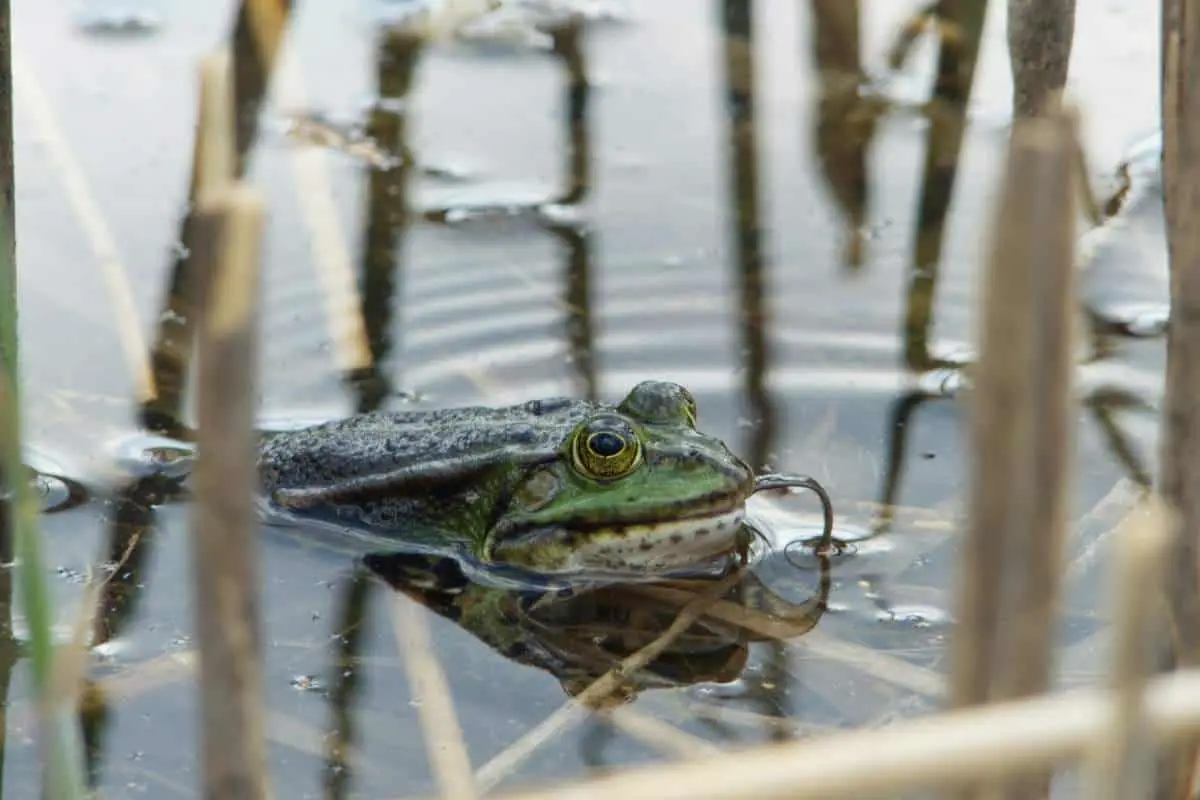Salamanders are amphibians with moist skin that look like a cross between a lizard and frog. They typically prefer living in damp habitats near water. Some are aquatic or semi-aquatic, while others are terrestrial and migrate to the water for breeding only. Out of all the fascinating facts about these animals, one question that often comes up is: can salamanders regrow their limbs?
Can Salamanders regrow limbs?
Yes, salamanders have the ability to regrow lost limbs! Not only can they regrow their limbs, but they can also grow them back at the right size and without any scars.
This article will explore the idea of limb regeneration when it comes to salamanders, including how they do this along with some other interesting facts.
First, let’s find out more about the different types of salamanders.
The Different Families of Salamander Species
All salamanders are part of the amphibian order Caudata. This word means “tailed” in Latin. However, there are 9 different families of salamander that differ in characteristics. These are:
- Salamandridae: True salamanders and newts
- Cryptobranchidae: Giant salamanders
- Hynobiidae: Asiatic salamanders
- Ambystomatidae: Mole salamanders
- Amphiumidae: Amphiumas
- Plethodontidae: Lungless salamanders
- Proteidae: Mudpuppies
- Rhyacotritonidae: Torrent salamanders
- Sirenidae: Sirens
While all salamanders have some potential to regenerate body parts, not all have the same capacities. For example, some can regrow more body parts than others or at faster rates.
How Do Salamanders Regrow Limbs?
Many scientists have studied the wonder of the salamander’s ability to regrow their limbs and asked the question: how do they do this? While different species have different processes, here are two main reasons behind how most salamanders regrow limbs.
Reorganizing Body Cells
Most salamander species have cells known as fibroblasts that can become multiple types of cells depending on what body part needs regrowing. In a very summarized version of what happens, salamanders can basically reassign these cells with new “tasks.” This reprogramming forms what is called a blastema that allows the salamander to develop the new cells they need for limb regrowth, including muscles, blood vessels, and nerves.
Unique Immune Systems
The salamander’s immune system is key to allowing them to regrow their limbs and other body parts. Scientists found that when they removed certain immune cells from salamanders, the animal lost its ability to regrow limbs. Instead, scar tissue formed at the cut area.
How Long Does it Take Salamanders to Regrow Limbs?
The length of time it takes for a salamander to regrow its limbs varies depending on different things. Different species will have different regeneration rates, with aquatic salamanders typically taking less time than terrestrial species. In some species, the older a salamander gets, the longer it will also take for them to regrow limbs.
Some examples of the time it takes to regrow limbs include:
- Juvenile axolotl (Ambystoma mexicanum) = 40 to 50 days
- Tiger salamander (Ambystoma tigrinum) = 155 to 180 days
- Small-mouthed salamander (Ambystoma texanum) = 215 to 250 days
- Ringed salamander (Ambystoma annulatum) = 324 to 375 days
If you have pet salamanders, make sure their environment is not stressful, as this can prevent them from regrowing their limbs. For instance, don’t keep too many in a tank so they feel cramped. Also, don’t keep them with other fish or animal species, especially those not native to their natural habitat.

Can Humans Learn From Salamanders?
Scientists believe that, just like salamanders, humans also have the capacity to regrow limbs. The difference is, the genes that allow us to do this are inactive in our bodies. Since humans grow body parts as embryos in their mother’s womb, I guess it’s not surprising to realize we could maybe one day continue to do this as adults. In fact, some scientists theorize that humans used to regrow limbs but lost the ability during evolution.
For now, our bodies form scar tissue around the area where our limbs are cut off to prevent infection. Scientists are studying exactly what happens when regeneration happens in salamanders and doing experiments on smaller animals. Their hopes are that one day humans may be able to regrow limbs even as adults.
The Most Common Species for Regrowth Research
As previously mentioned, many scientists have researched salamanders and their ability to regrow limbs. The species that are most commonly used in research studies are the:
- Axolotl (Ambystoma mexicanum)
- Eastern red-spotted newt (Notophthalmus viridescens)
- Japanese fire-belly newt (Cynops phyrrogaster)
- Iberian ribbed newt (Pleurodeles waltl)
Scientists have found that newts and axolotls can regrow different body parts and have different processes to regrow limbs. For example, in newts, their muscle cells will develop in reverse to contribute towards the regrowth of limbs, also known as muscle dedifferentiation. In contrast, axolotls have a stem cell in their bodies that triggers new muscle fibers.
Other Body Parts Salamanders Can Regrow
Besides their limbs, different salamander species are also known to regrow other body parts that are cut off or damaged. Here are a few examples:
- Brain: scientists at the National Autonomous University of Mexico found that when you cut part of an axolotl’s brain, they can regenerate it.
- Eye Lens: various studies have found that newts can regenerate their eye lens and that this ability does not diminish with age.
- Spinal Cords: scientists at the Marine Biological Laboratory found genes in the axolotl that allowed them to regenerate severe spinal cord damage.
- Hearts: stem cell research at the University of California Los Angeles (UCLA) found that newts can create new heart muscles.
Other Interesting Salamander Facts
1. They Drop Their Tails as a Defense Mechanism
Some salamander species can deliberately drop their tails when they are in a fight or feel threatened. This is a great defense mechanism, especially since their tails will eventually regrow. When their tail is detached, it wriggles around and distracts their predator, giving the salamander time to run and hide.
2. Some Important Species for Research Are Endangered
Despite having an incredible survival ability, including being able to regrow its brain, the axolotl is an endangered species in its natural habitats. You can find these salamanders in only one place: Lake Xochimilco, south of Mexico City.
This species is now endangered due to water pollution and the introduction of non-native fish species that feed on them. Although scientists can grow these salamanders in tanks, they also need to save the wild species and their habitats.
3. Salamanders Existed Before the Dinosaurs
The oldest salamander ever found was a fossil from the Triassic period, 230 million years ago. The ancient salamander species is called the Triassurus sixtelae and proves they have been around even before the dinosaurs existed.
4. They Don’t Have Vocal Cords
Although salamanders can regrow multiple body parts, there are some body parts they simply don’t have. Instead of using vocal cords, salamanders communicate through chemical signals and touch. They can also make sounds, such as clicking, squeaking, and snapping, by exhaling sharply or clasping their jaws.




